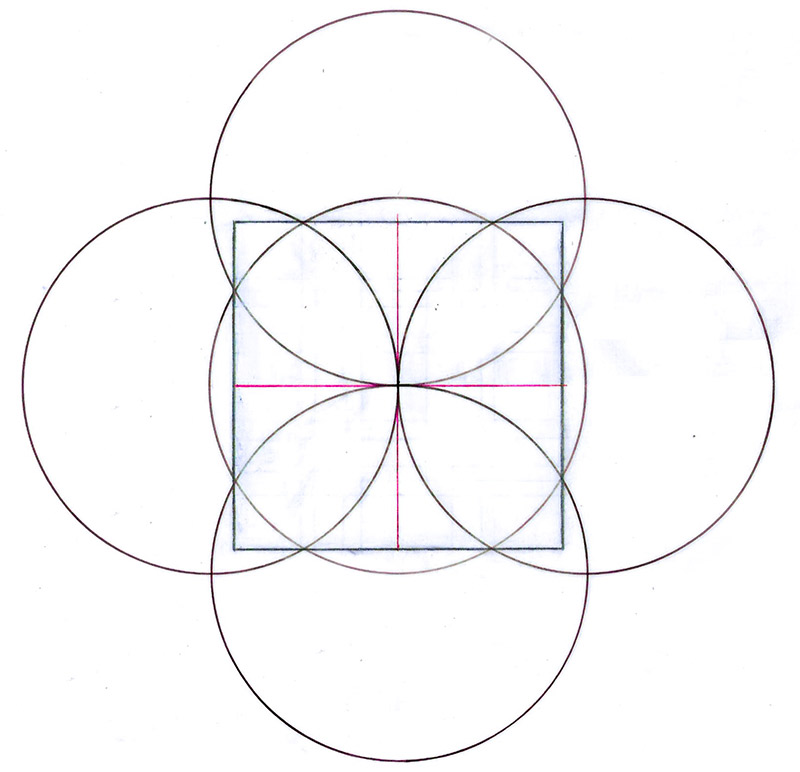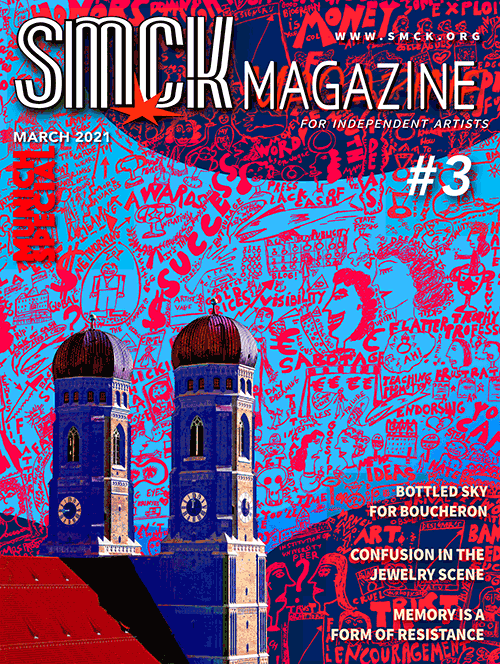THE ART OF MAKING JEWELRY INNOVATORS
MASIERAAD ON THE ART OF EDUCATING
Interview by SMCK Magazine
 Thomas Dembowski "Hermetik Space"
Thomas Dembowski "Hermetik Space"
Good teachers encourage students to achieve their potential. MASieraad Hasselt-Amsterdam is the initiative of three internationally-acclaimed jewelry designers - Gijs Bakker, Ted Noten, Ruudt Peters - and art historian Liesbeth den Besten.
The interview reflects their fascinating experience in the field and sheds light on a program aspiring to educate the innovators of jewelry art.
SMCK: What does a jewelry artist need to know nowadays to survive in the highly competitive, but also relatively small, jewelry art sector? What advice would you give a young artist seeking inspiration, exposure, or recognition?
TN: What is at stake for me is to get out of this niche and democratize jewelry. I am always trying to find new audiences in the daily world, the art world, and design world. If you seek competition in the art jewelry sector you have to compromise and make things the audience (i.e., the gallery) wants from you. In my view that is a very limited position.

Time-lapse of the sun. Photo: Courtesy NASA/JPL Caltech
LdB: in the first place, students need an understanding of the world of jewelry. There are so many directions they can chose. There are more options than the jewelry gallery: there is fashion, design, theater; there are other contexts where you can make your work bloom or where your work contributes to a larger project or concept.
GB: It is a privilege to work with Master's students who bring enormous baggage of culture and craftsmanship with them. It is also often those students who are still struggling with their talent and do not know how to channel it. My task is to confront students with the dogmas surrounding the jewelry business, to question those dogmas, always aiming at further exploiting their individual talents. Due to their different backgrounds, working within such a group can open their eyes to other cultures, other ways of life, different political views.
RP: It is especially and incredibly important that you stay true to yourself. The most important advice is to be very critical in the 'subject or concept' you choose. Stay true to your subject, do not be tempted by questions of marketability or wearability or adornment and decoration. If you really want to make a difference in jewelry, you don't have to make any concessions.
SMCK: Art made by Bakker, Noten, and Peters is very distinctive in form, concept, and style. How do you ensure that your students - consciously or unconsciously - do not imitate your work?
LdB: The school is not about promoting the work of the initiators or trying to establish a 'school of working'. We hope for self-willed artists who are ready to question anything, including the lessons of their teachers.
 NEBULA - Ruudt Peters. Photo by Koen Jacobs
NEBULA - Ruudt Peters. Photo by Koen Jacobs
TN: To be awake as a teacher and confront the student, and most of all teach the students to be their own teacher because in the end that is what you have to learn. But it's not bad to copy another maker for a little while; it's a known phenomenon as well as that this works in a good way to help find your own signature.
GB: The danger of the student being influenced by the teacher is caused by the incompetent artist in that teacher. A teacher recognizes his qualities, but especially his shortcomings.
RP: Undeniably, we represent different movements and theory in the jewelry. Because Gijs, Ted, Liesbeth, and I all have a different vision of jewelry that is sometimes at odds with each other, the student is forced to take up a position and to speak out for their formal language.
SMCK: Many art students feel intimidated, when they realize what a long road of effort, disappointment, knowledge, and work they must travel before they achieve excellence and become famous. On the other hand, art history can be a source of inspiration and a continuous, and enriching, dialogue between the present and the past. What's your opinion?

VARNA gold treasure, Bulgaria. Photo: archaeologyinbulgaria.com
LdB: Contemporary, historical, and intercultural jewelry is a rich source of inspiration. In my view, it is empowering because it shows students the ubiquity of jewelry, how it has been related to people, clothing (and fashion), societies, cultures, religions, rituals, trade, cultural exchange, and politics since the dawn of humanity. Jewelry and meaning are kind of interchangeable: all jewelry has a meaning because of its non-utilitarian character. Unlike a costume or a dress, a piece of jewelry is something extra. And therein lies its meaning.
I am not interested in teaching styles, for instance what is Baroque, but rather in teaching students why jewelry was worn, how it was worn and by whom, or why it was buried with a deceased person.
TN: There are certain "laws" in becoming an artist, such as knowing the history and being aware it takes 10,000 hours to learn a skill. I remember as a student that I feared (and still do a little) seeing art. It felt like it would "steal' my spontaneity-playfulness and I would lose parts of my authenticity. On the other hand, nothing is so painful as when you make something and later on find out that it had already been done.
READ THE FULL ARTICLE IN THE DIGITAL OR PRINT VERSION...








